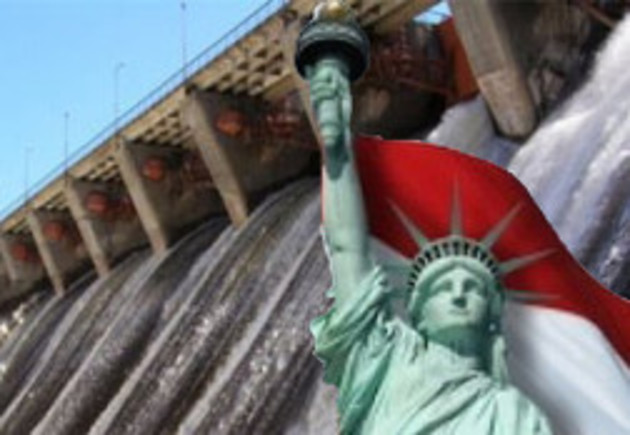By David Stepanyan, Yerevan. Exclusively for Vestnik Kavkaza
It seems that the US has taken direct action in Armenia after its refusal to sign the association agreement with Europe. The delegation headed by Armenian Minister for Finances David Sarkisyan has concluded talks in Washington and outlined a set of important fields of cooperation. First of all, Armenia and the US have started the process of liberalizing the visa regime. Secondly, US Contour Global, a hydro-energy company, plans to invest $180 million in Armenia.
The Eastern Partnership was initiated by Poland and Sweden with US encouragement. Strategy-makers in Brussels wanted it to weaken Russian influence on the post-Soviet space. Six post-Soviet states of Eastern Europe and South Caucasus were involved in the partnership with Europe. Belarus was quickly dissociated from the partnership for the undemocratic policies of Alexander Lukashenko. Ukraine, Moldova, Georgia and Armenia expressed a readiness to association agreements and the DCFTA when Europe proposed a new format of cooperation in 2010.
Yerevan suddenly expressed the will to join the Customs Union on September 3. Ukraine halted the process of signing the agreement with the EU for the sake of ‘national security.’ Communists in Moldova started mass protests against the ‘window to Europe’ opened by the government. Thus, Georgia will be the only one to sign the association agreement and the DCFTA in Vilnius. For a set of reasons, Washington predicted the scenario. And, of course, it made its own steps to preserve and increase influence in the states refusing association. In the case of Armenia, the idea was realized in the energy sector.
Although neither the US State Department, nor the Armenian government have said directly, it is clear that they mean the Vorotan Complex of Hydro Power Plants. 100% of its shares belong to the government. The company owns the Tatev, Shamb and Spandaryan Dams on the Vorotan River, producing 404.2MW with an average annual projected output of 1.16KW/h. The nuclear energy block in Armenia produces 407MW of electricity, for comparison. So the cascade needs modernization.
The Overseas Private Investment Corporation (OPIC) and the International Finance Corporation (IFC) will partly finance the process together with Contour Global. The investments will be the largest in the Armenian economy from US company and the first US investments in the energy sector of Armenia.
Curiously, Russian private and state companies remain the monopolists in Armenian energy. What matters at this point is the reaction to the upcoming deal because Russian investments will be mixed with the US finances for the first time. Some experts in Armenia assume that the US are switching to the phase of active economic cooperation, ceding the political aspect to Russia.






